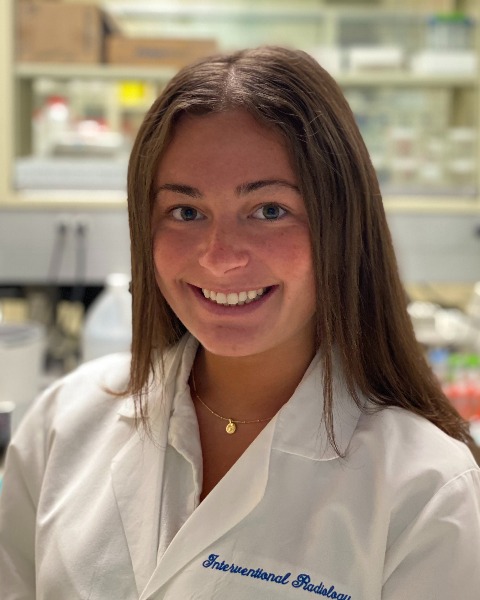Dialysis Interventions and Transplant Interventions
Bismuth Nanoparticle and Dipyridamole-loaded Electrospun Polymeric Scaffold as Radiopaque Bioresorbable Drug-Eluting Vascular Graft

Sarah Honegger
Undergraduate
University of Notre DameDisclosure(s): No financial relationships to disclose

Erin Marie San Valentin (she/her/hers)
Graduate Student
Department of Interventional Radiology at The University of Texas MD Anderson Cancer Center- MB
Marvin Bernardino, n/a
Research Investigator
Department of Interventional Radiology at The University of Texas MD Anderson Cancer Center - JD
Jossana Damasco, n/a
Postdoctoral Fellow
Department of Interventional Radiology at The University of Texas MD Anderson Cancer Center - KC
Karem Court, n/a
Postdoctoral Fellow
Houston Methodist Research Institute - BG
Biana Godin, n/a
Assistant Professor
Houston Methodist Research Institute 
Steven Y. Huang, MD, FSIR
Professor
The University of Texas MD Anderson
Marites P. Melancon, PhD
Associate Professor
Department of Interventional Radiology at The University of Texas MD Anderson Cancer Center
Featured Presenter(s)
Author/Co-author(s)
Failure of arteriovenous graft placement for patients on dialysis can lead to neointimal hyperplasia (NIH). Anti-platelet and vasodilator drugs such as dipyridamole (DPA) mitigate NIH and long-term patency post-graft placement. Nanoparticles allow for visualization and long-term monitoring of these absorbable medical devices. We aim to develop a bioresorbable and radiopaque bismuth nanoparticle (BiNP) and DPA-loaded scaffold made of polycaprolactone (PCL) and polyethylene glycol (PEG).
Materials and Methods:
BiNPs (3.44 ± 0.59 nm) were synthesized by thermal decomposition. Solutions of PCL (80,000kDa), PEG (8,000kDa), BiNP, and DPA were electrospun into 3cm scaffolds. Scaffolds were monitored over 6 weeks in terms of drug and nanoparticle released, tensile strength, and radiopacity. In vitro hemolysis and cytotoxicity assays were done to test biocompatibility of grafts.
Results:
Physicochemical properties of grafts are shown in Table 1. DPA-loaded grafts released ~38% of the drug over 7 days, which increased to ~70% release over twelve weeks. BiNP-loaded grafts released between 3-5% of the total BiNP within the first 12 weeks, which correlated with a radiopacity loss of only 16.6% over the 12 week trial period (PCL-PEG-BiNP-DPA: 1001.2 ± 111.8 HU at Week 0 vs. PCL-PEG-BiNP-DPA: 834.7 ± 36.8 HU at Week 12). EC-RF24 and MOVAS remained viable in the presence of BiNP and DPA treated media. The presence of DPA in grafts increased blood lysis by about 2% (PCL-PEG-DPA: 1.8 ± 1.1% vs PCL-PEG-BiNP-DPA: 2.5 ± 0.5%).
Conclusion: Trilayer scaffolds made of PCL and PEG and loaded with both DPA and BiNP demonstrated increased radiopacity with no detrimental effects on epithelial or vascular smooth muscle cells, and an effective release of DPA over time. These results confer its advantage for serial non-invasive imaging over time to assess degree of polymer resorption and potential for in vivo NIH inhibition. Grafts were surgically implanted in rats to begin in vivo imaging and efficacy studies.

.png)
.png)
.jpg)
.png)
.png)
.png)
.jpg)
.png)
.jpg)